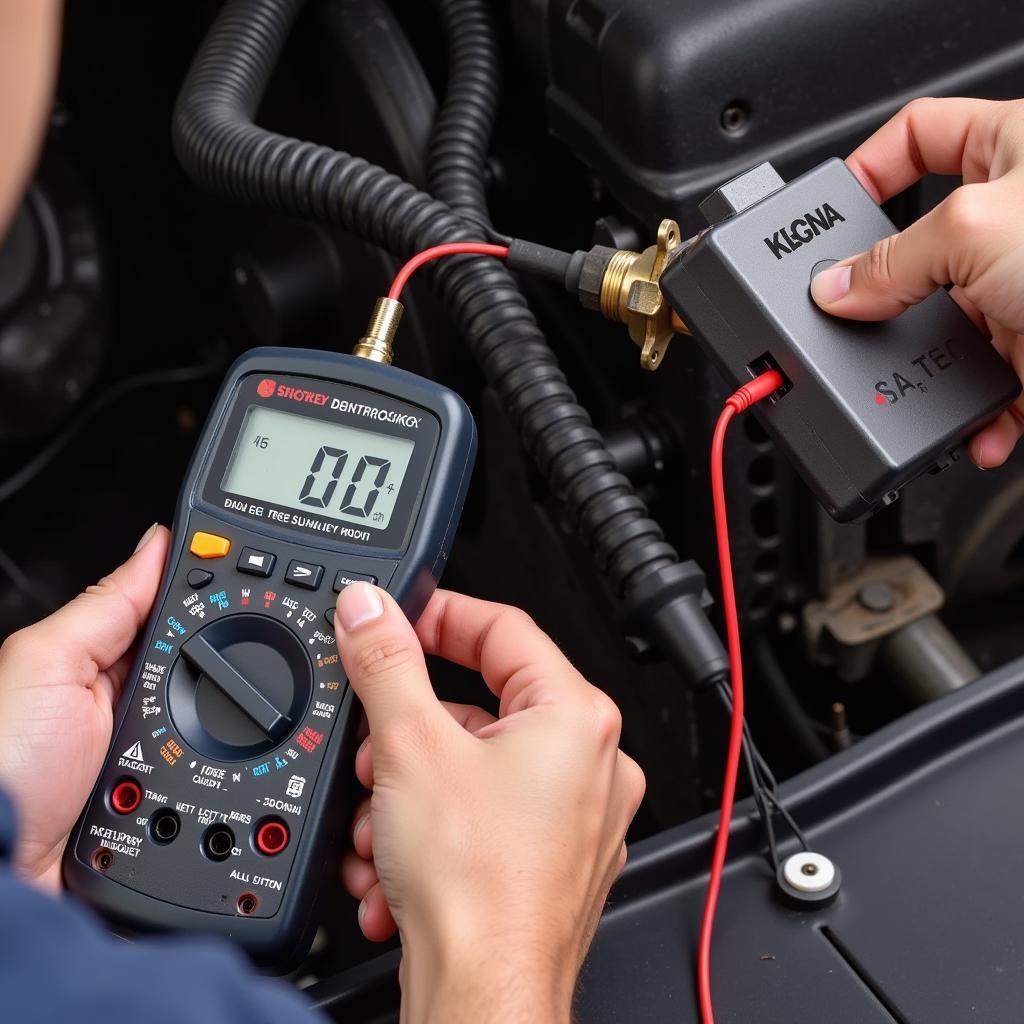The insistent beep of a car seat belt warning sound effect is a familiar one to most drivers. While it can be an annoyance, it’s a crucial safety feature designed to remind you and your passengers to buckle up. But what happens when the sound malfunctions, or you need to disable it temporarily? This article delves into the world of car seat belt warning systems, exploring their function, common issues, and potential solutions.
Understanding the Seat Belt Warning System
Car seat belt warning systems are designed to increase seat belt usage and, consequently, reduce injuries and fatalities in accidents. These systems typically consist of:
- Sensors: These detect the presence of a fastened seat belt.
- Control Module: This processes the information from the sensors and determines whether to activate the warning.
- Warning System: This can be an audible chime, a visual indicator on the dashboard, or both.
When you start your car, the system performs a check. If a seat is occupied but the belt isn’t fastened, the warning system activates. The duration and intensity of the warning can vary depending on the car model.
Common Car Seat Belt Warning Sound Effect Issues
While these systems are generally reliable, you might encounter some problems:
- Continuous Beeping: This usually indicates a faulty sensor, often due to a wiring problem or a damaged buckle.
- Intermittent Beeping: This can be caused by a loose connection, a failing sensor, or even something as simple as an object on the seat.
- No Warning Sound: This suggests a problem with the control module, the wiring, or the speaker responsible for the chime.
Troubleshooting Car Seat Belt Warning Sound Effects
Before seeking professional help, you can try some troubleshooting steps:
- Check the Basics: Make sure all seat belts are properly fastened. Inspect the buckles and seat belt receivers for any visible damage or obstructions.
- Check for Objects: Remove any objects from the seats, as they might interfere with the sensors.
- Inspect the Wiring: If you’re comfortable working with car electronics, visually inspect the wiring harnesses connected to the seat belt buckles and sensors. Look for any loose connections, exposed wires, or signs of damage.
When to Seek Professional Help
If basic troubleshooting doesn’t resolve the issue, it’s best to consult a qualified automotive electrician. They have the tools and expertise to:
- Diagnose the Problem: Using advanced diagnostic equipment, they can pinpoint the root cause of the malfunction.
- Repair or Replace Components: Whether it’s a faulty sensor, a damaged wiring harness, or a malfunctioning control module, they can efficiently repair or replace the necessary parts.
- Perform Software Updates: In some cases, the issue might stem from outdated software in the car’s control module. Automotive electricians can perform the necessary updates to resolve the problem.
Disabling the Car Seat Belt Warning Sound Effect
While not recommended, you might need to temporarily disable the warning system, for instance, when transporting heavy equipment that triggers the sensor. However, remember that disabling the system can compromise your safety and might be illegal in some areas.
Methods for disabling the warning sound vary significantly between car models and can involve:
- Using the Car’s Settings: Some cars allow you to adjust the sensitivity or duration of the warning sound through the infotainment system.
- Using Diagnostic Tools: Specialized diagnostic tools can be used to access and modify the car’s settings, including the seat belt warning system.
It’s crucial to consult your car’s manual or seek professional assistance before attempting to disable the warning system. Modifying your car’s safety systems incorrectly can have serious consequences.
FAQs About Car Seat Belt Warning Sound Effects
-
Can I disable the passenger seat belt warning sound if no one is sitting there?
Some cars have a passenger occupancy sensor that automatically disables the warning if the seat is empty. However, if your car doesn’t have this feature, it’s best to consult your car’s manual or a professional.
-
Why is my seat belt warning light flashing even when the belt is fastened?
This could indicate a problem with the seat belt pretensioner system, a crucial safety feature that tightens the belt during a collision. Consult a mechanic immediately.
-
My car is quite old. Does it have a seat belt warning system?
Seat belt warning systems became mandatory in many countries in the late 1990s and early 2000s. Check your car’s manual or consult a mechanic to be sure.
Prioritizing Safety on the Road
The car seat belt warning sound effect, while potentially annoying, plays a vital role in road safety. Understanding its function, potential problems, and solutions empowers you to address issues promptly and ensure a safer driving experience for yourself and your passengers. Remember, regular maintenance and timely professional intervention are key to keeping your car’s safety systems in optimal condition.
If you’re experiencing persistent issues with your car seat belt warning system, don’t hesitate to seek help. For specific guidance on certain car models, you can refer to our troubleshooting guides for Nissan Qashqai seat belt warning light, 2005 Camry disable seat belt warning, or Hyundai Santa Fe seat belt warning. Your safety is paramount, and addressing car safety system issues promptly is crucial.


